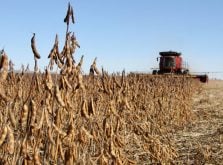Parliamentarians have rushed into law a bill that restores to more than one million rural residents the right to vote in federal elections.
The ability to vote had been inadvertently stripped from residents without street addresses when last summer Parliament approved Canada Elections Act changes to impose stricter rules on proof of residence in polling booths.
Elections Canada noted that the original bill had gone too far and more than a million people with mailing addresses that are postal boxes, rural route numbers or a central office on a First Nations’ reserve would not be able to produce a “civic address” to identify where they live.
Read Also

Manitoba extends Crown land rent freeze
Manitoba government links the continued rental rate freeze on grazing and forage leases to economic and environmental challenges facing the industry
With several byelections due to be called by prime minister Stephen Harper soon, and the possibility of a general election in the winter, Parliament fixed the bill before anyone was affected.
The House of Commons dealt with it quickly and sent it to the Senate Dec. 13. Senate approved the bill and saw it passed into law in one day just before it adjourned for Christmas.
From the Commons, government House leader Peter Van Loan appeared on the Senate floor to promote the solution for a problem that was created by a careless Parliament in the first place.
“The issue is that many voters simply do not have a civic address on their identification,” he said.
“For example, in the province of Saskatchewan, in places where people may have rural route addresses, it is often the case that a driver’s licence will simply show Rural Route 3 rather than the municipal address.”
Tkachuk said 27 percent of Saskatchewan residents would have been disenfranchised if the change had not been made.














